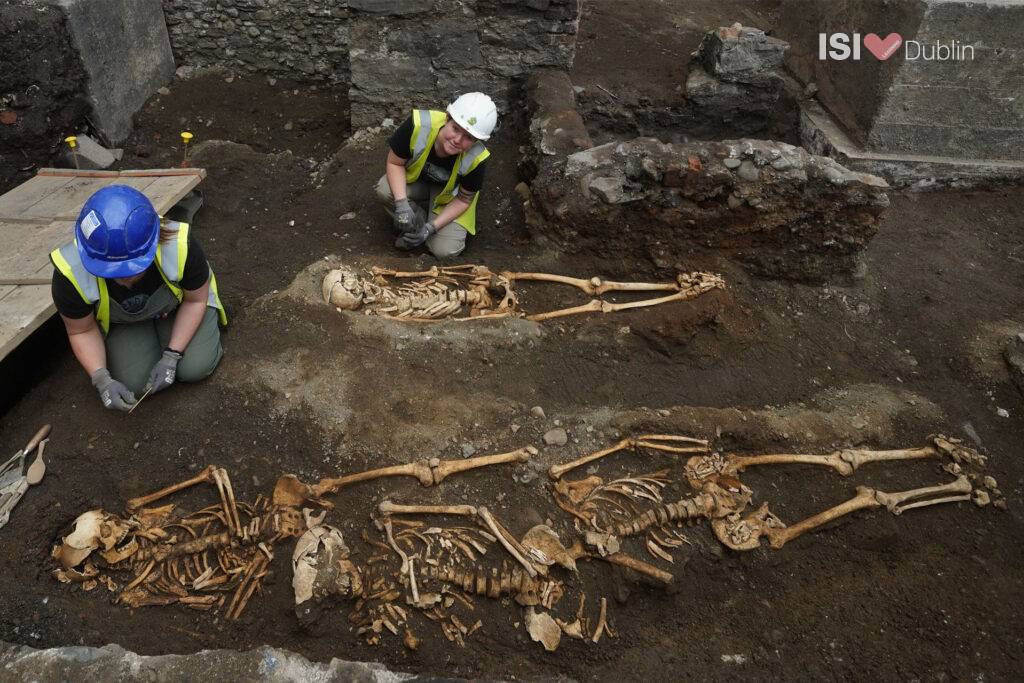Ghoulish Discovery at St Mary’s Abbey, now dubbed “the Christ Church of the Northside”
Did you know that there has recently been a rather ghoulish discovery adjacent to our Meetinghouse Lane campus here in Dublin’s city centre, where St Mary’s Abbey — discussed in our last blog post — once stood? Roughly 100 skeletal remains dating back to the Middle Ages have been discovered and unearthed in an excavation commissioned by the Beannchor hospitality group, which is developing its Bullitt Hotel on the site. If you are a student with us here at ISI, we’d wager that when you chose to live and study in Dublin, you were not expecting to find yourself amidst one of the richest and as-of-yet underdeveloped archaeological sites in Ireland!
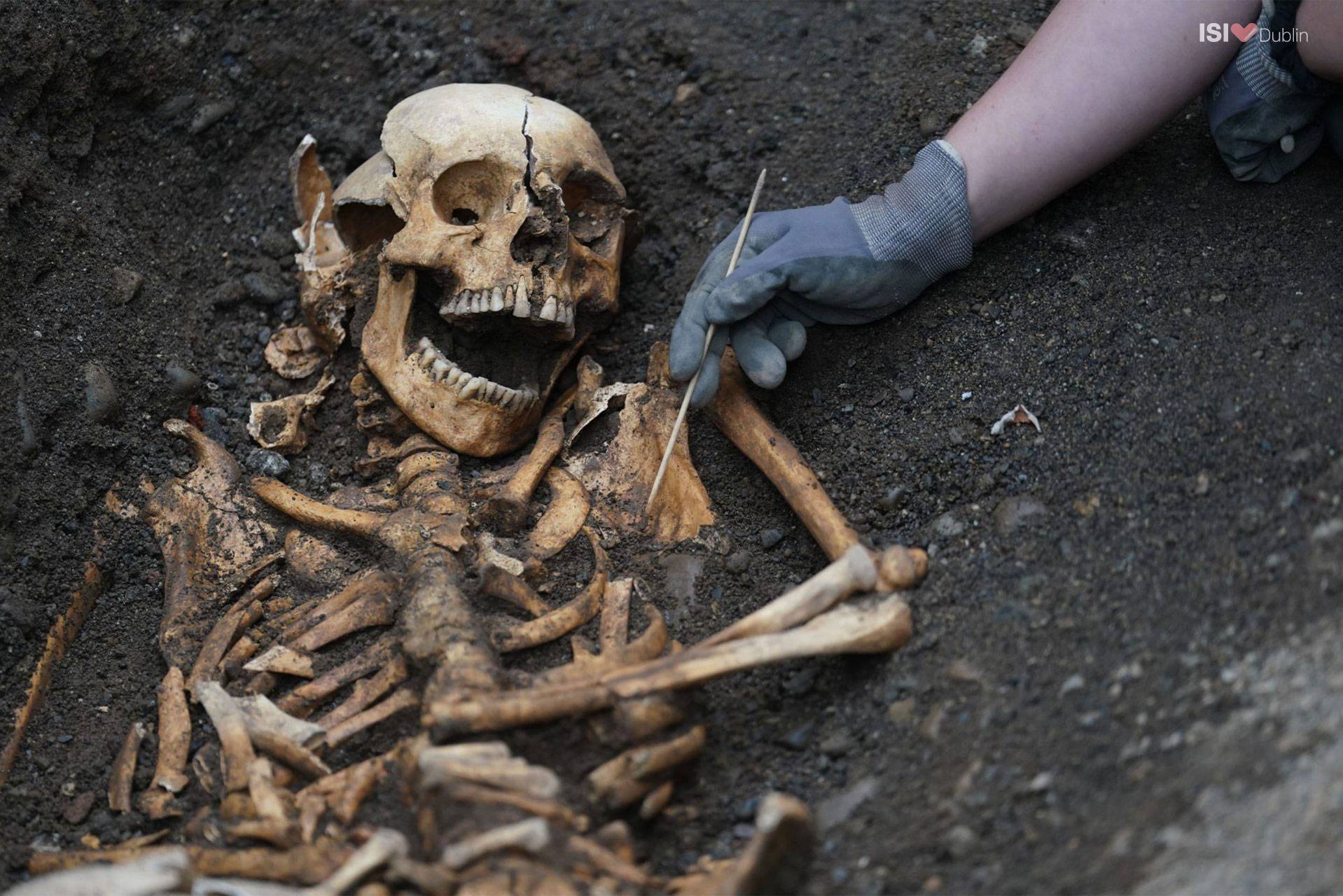
Beannchor, noted for undertaking similar restoration of historic buildings in the past, including Belfast’s Merchant Hotel, have said the Dublin venture is by far their biggest and most complex project to date. Director of excavations, Edmond O’Donovan, has described the significance of the finds: “In its day, St Mary’s Abbey was Ireland’s largest and most wealthy medieval abbey,” he said. “It was demolished after 1540 when the monastery was disbanded by Henry VIII and was later the site of a 17th century Presbyterian Meeting House.” He added: “One of the things that was intriguing and exciting about the excavation is that we found an early burial or at least a number of burials that we suspect to be quite early.” Of these, he said: “We have one that’s carbon dated to the 11th century and we have a second burial that was found with a diagnostic stick pin from the 11th century. And that suggests that there was an earlier Christian and potentially monastic foundation here which predates the Savigniac and Cistercian Abbey.”
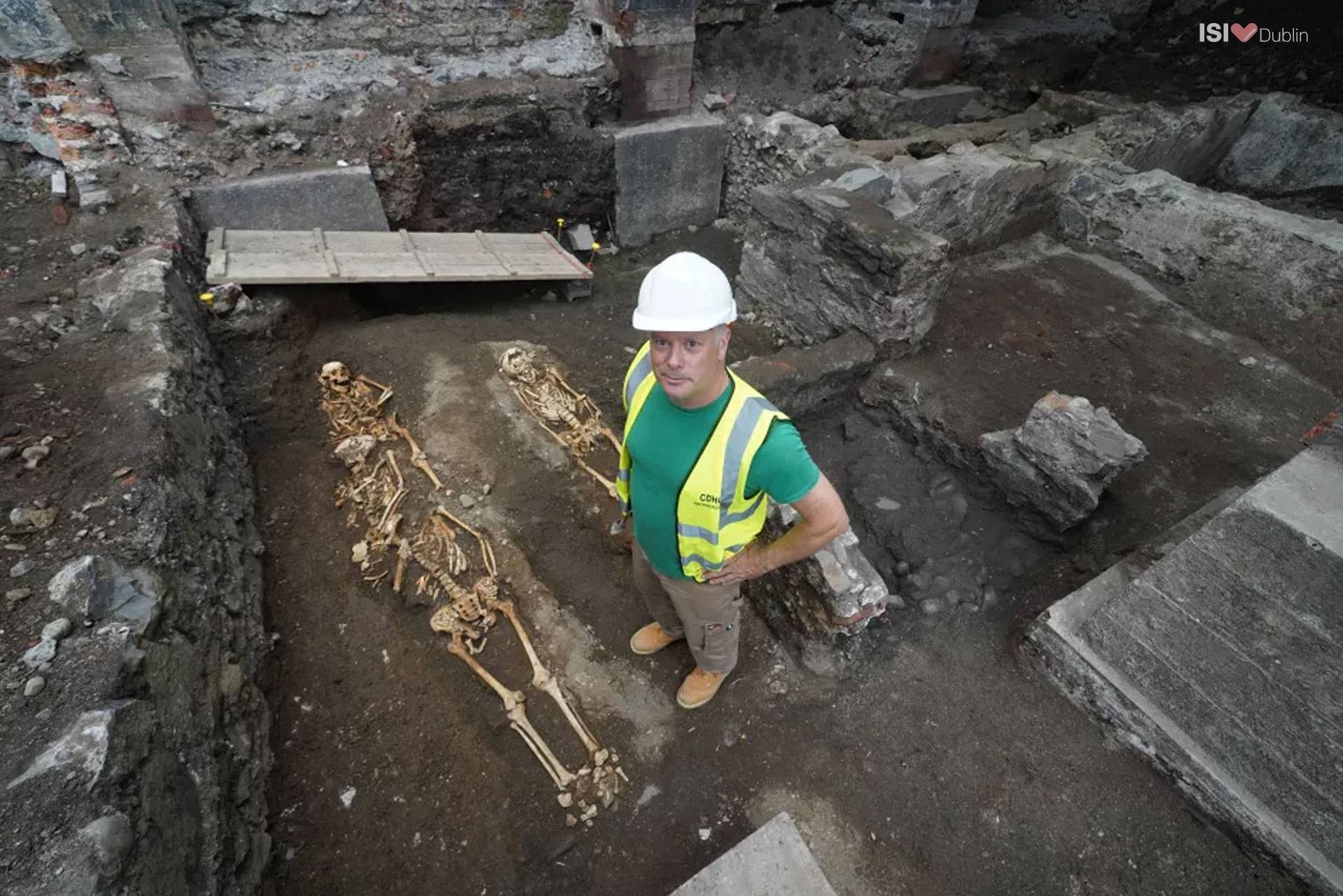
As mentioned in our last blog post, our Meetinghouse Lane campus and the adjoining Chapter House comprise the only remaining building of what was once a very large complex housing the wealthiest abbey in Ireland, St Mary’s Abbey. According to the Annals of the Four Masters, the ecclesiastical building initially constituting the abbey was founded in 846 by Máel Sechnaill mac Máele Ruanaid, then High King of Ireland. Máel Sechnaill’s reign has been portrayed as predominantly a matter of war with the Vikings and Norse-Gaels. Indeed, in 856, just ten years after the proto-abbey was allegedly founded, “[g]reat warfare between the heathens [the Norse or Danes] and Máel Sechnaill with the Norse-Irish” is reported by the Annals of Ulster.
Under which auspices Máel Sechnaill founded the original abbey, we are not clear, but of one thing we can be certain: it was Christian. There is no doubt, for example, that St Patrick had already, indeed much earlier (in the 5th century), established the primatial archdiocese of Ireland at Armagh, the royal fort of the kings of Ulster. We also know that, while the old Irish religious practices of Druidism continued under the auspices of Christianity during and after his lifetime, when St Patrick died thirty-three years after having first undertaken his mission in Ireland, the whole island was effectively Christianised. This is plainly supported by the fact that Brehon Law — the ancient law of Ireland — had been expunged of everything that clashed with Christian faith by a committee of nine persons, including the then High King of Ireland, Lóegaire mac Néill, at the request of Patrick himself; who too was part of this committee. As Dr Noelle Higgins, Lecturer at the School of Law and Government at Dublin City University, has explained: “According to the [Senchus Mór], St Patrick requested that a collection of all pagan laws in Ireland be made in 438 A.D. Laegaire, then king of Ireland, formed a committee, with himself and St Patrick as members, to revise these laws. The result was a new legal code from which, according to the text, everything that clashed with Christianity was removed.”
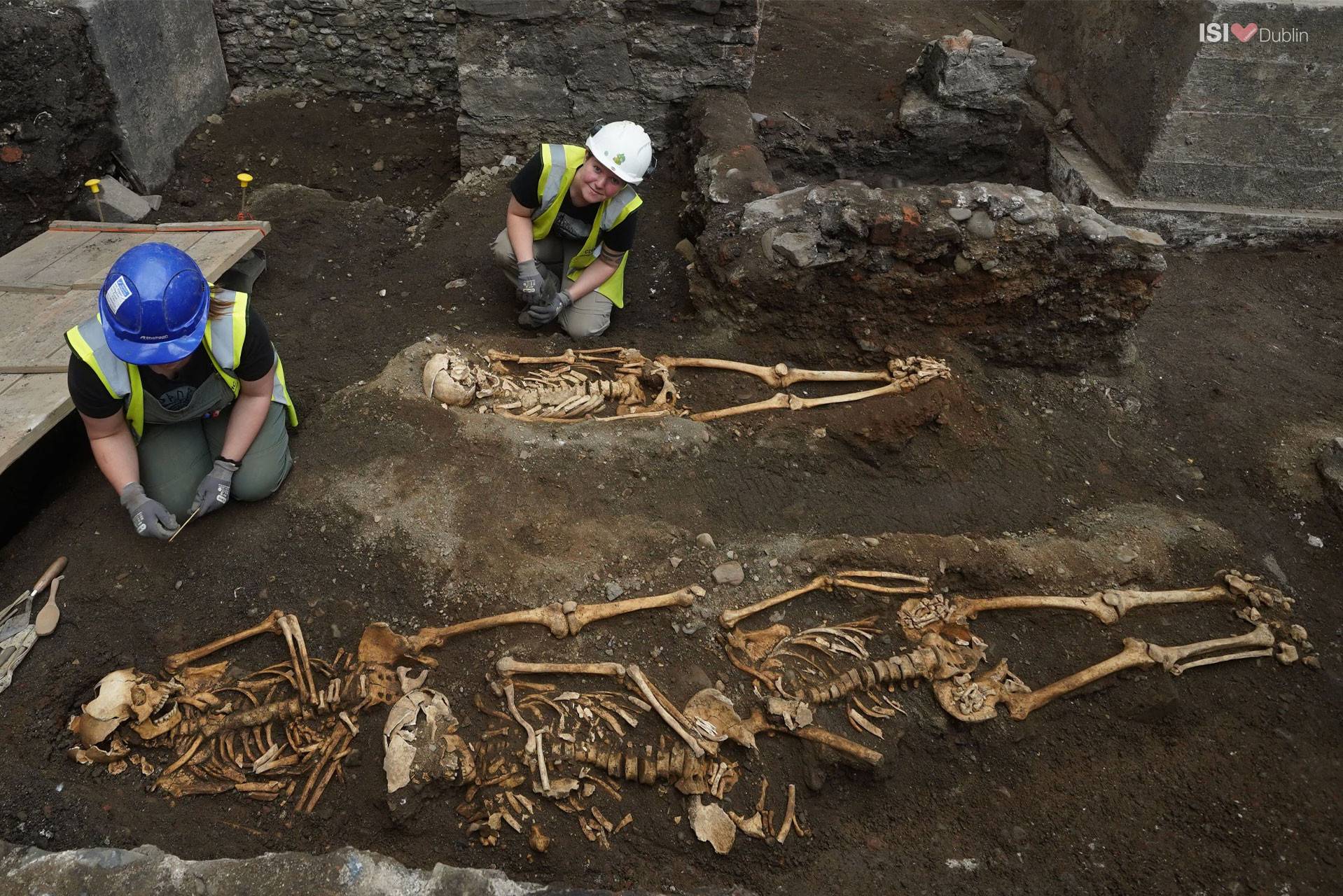
If the original ecclesiastical building forming St Mary’s Abbey was indeed founded by Máel Sechnaill in the 9th century, we should not be surprised or shocked by the discovery of Christian burials that date to the 11th century, if not earlier, on this site. However, for some, including the director of excavations himself, Edmond O’Donovan, this does appear to be something of a revelation: “The burials show that when the abbey was established it came to an existing church site; we have no previous historical reference for that.” “That tells us a little bit about the relationship between the late Viking population and Christianity — we see a Viking-age Dublin that is becoming Christian before the coming of the Anglo-Normans.”
A Viking-age Dublin becoming Christian, . . . before the coming of the Anglo-Normans, really!? It is true that with the coming of the Anglo-Normans in the 12th century we witnessed great social and political changes which, as a matter of course, left an indelible mark on our landscape. We have Norman castles, Romanesque abbeys and cathedrals, such as Christ Church Cathedral, betokening the permanence of their occupation. More telling, however, is the fact that Christ Church, though rebuilt by the Normans, was originally constructed by the Viking king Sitric Silkenbeard in the 11th century. Moreover, its elder neighbour, Saint Patrick’s Cathedral, though dating in terms of current size and shape to the 13th century, was originally built on the site of an ancient well alleged to have been used by St Patrick himself. According to legend, St Patrick passed through Dublin in the 5th century and used this well to baptise converts to Christianity.
While this could be dismissed as hearsay, we know for a fact that the original stone building constituting Saint Patrick’s Cathedral dates to the 9th century; within fifty years of when Máel Sechnaill is said to have built the church originally constituting St Mary’s Abbey. During an excavation in 1901, not unlike that which has recently taken place adjacent to our ISI campus, six Celtic grave slabs were unearthed, one of which looked like it was covering the ancient well reported to have been used by St Patrick. In any case, the disentombed presence of these stones at the time proved the site itself had been used within a Christianised-ritualistic context for over one thousand years, much like the burial site unearthed at St Mary’s Abbey today proves the existence of a Christian settlement predating the foundation of the Savigniac and Cistercian abbey — previously thought to be the earliest, post-Viking, Christian settlement in this part of the city.
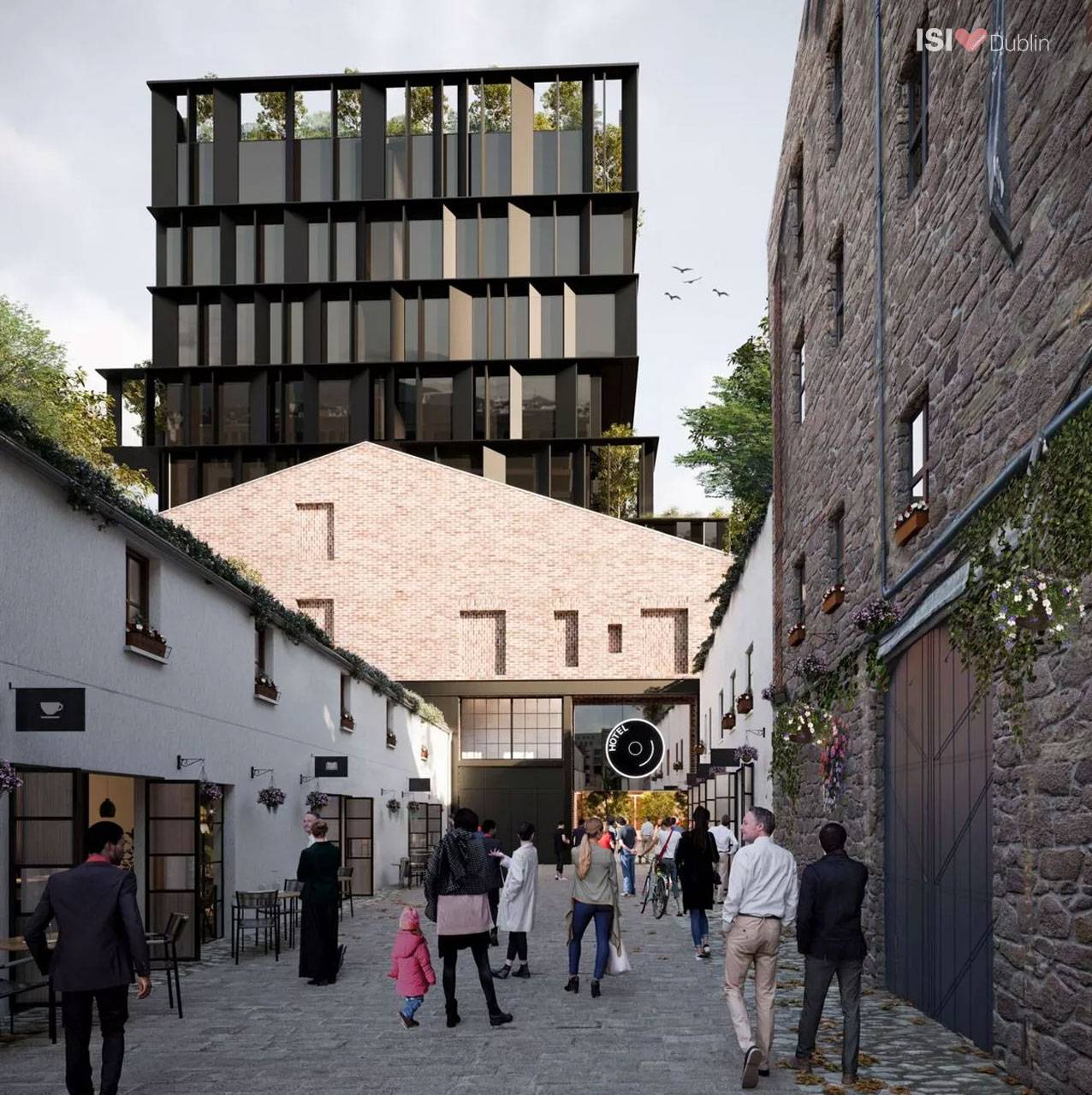
With the skeletons now removed from the site, the environs of St Mary’s Abbey are set to be incorporated into the Bullitt hotel project by Beannchor: the hospitality group that secured the site and commissioned the excavation due to the historic location of the area — anticipating the findings — up to two years ago. “Dubliners know about Abbey Street and Mary Street, but they wouldn’t necessarily associate it with the medieval abbey. This development will allow the story of what was the Christ Church of the northside to re-emerge.”
It seems James Joyce was right, apropos of our last blog post, this is indeed “the most historic spot in all Dublin [!]” Whether you have already decided or are in the process of deciding to live and study in Ireland, you should definitely bear this in mind: not only is ISI the best English language school in Dublin, UNESCO City of Literature, it is also the one which boasts the richest literary and cultural heritage!
